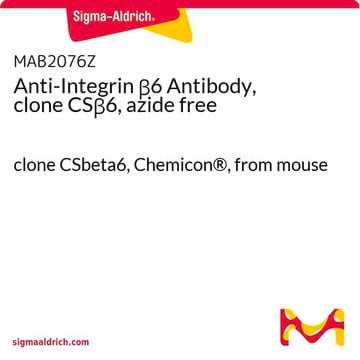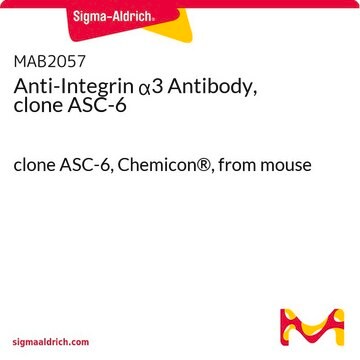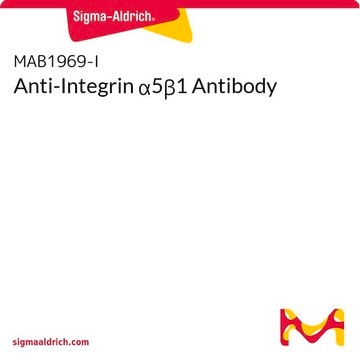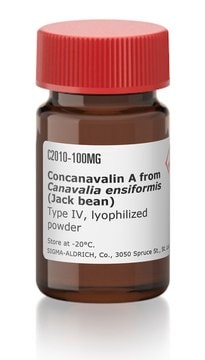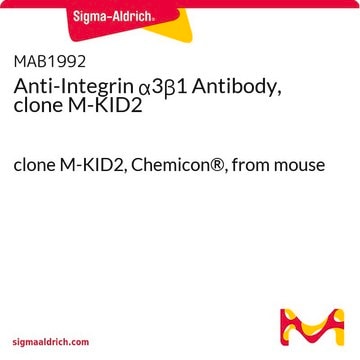AB1920
Anti-Integrin α3 Antibody
serum, Chemicon®
Sinonimo/i:
CD49c
Scegli un formato
534,00 €
Spedizione prevista il18 aprile 2025Dettagli
Scegli un formato
About This Item
534,00 €
Spedizione prevista il18 aprile 2025Dettagli
Prodotti consigliati
Origine biologica
rabbit
Livello qualitativo
Forma dell’anticorpo
serum
Tipo di anticorpo
primary antibodies
Clone
polyclonal
Reattività contro le specie
porcine, rat, goat, canine, sheep, hamster, equine, pig, bovine, human, mouse, chicken, horse
Produttore/marchio commerciale
Chemicon®
tecniche
ELISA: suitable
immunofluorescence: suitable
immunohistochemistry: suitable
immunoprecipitation (IP): suitable
radioimmunoassay: suitable
western blot: suitable
N° accesso NCBI
N° accesso UniProt
Condizioni di spedizione
wet ice
modifica post-traduzionali bersaglio
unmodified
Informazioni sul gene
human ... ITGA3(3675)
Descrizione generale
Specificità
Immunogeno
Applicazioni
A 1:1,000 dilution of a previous lot was used in Enzyme-linked Immunosorbent Assay/Radioimmunoassay.
Immunoprecipitation:
5 µL of a previous lot precipitated alpha3/beta1 from 5 x 106 cells (Sherry, D.M., 2001).
Immunohistochemistry/immunofluorescence:
1:500 dilution of a previous lot was used, suggest use on acetone-fixed tissue.
Western Blot Analysis:
1:500 dilution of a previous lot was used.
Optimal working dilutions must be determined by end user.
Qualità
Western blot: 1:500 dilution of this lot detected INTEGRIN ALPHA 3 on 10 μg of A431 lysates.
Descrizione del bersaglio
Linkage
Stato fisico
Risultati analitici
Human fetal foreskin fibroblasts (HFFF), neuroblastomas
Altre note
Note legali
Non trovi il prodotto giusto?
Prova il nostro Motore di ricerca dei prodotti.
Raccomandato
Codice della classe di stoccaggio
10 - Combustible liquids
Classe di pericolosità dell'acqua (WGK)
WGK 1
Certificati d'analisi (COA)
Cerca il Certificati d'analisi (COA) digitando il numero di lotto/batch corrispondente. I numeri di lotto o di batch sono stampati sull'etichetta dei prodotti dopo la parola ‘Lotto’ o ‘Batch’.
Possiedi già questo prodotto?
I documenti relativi ai prodotti acquistati recentemente sono disponibili nell’Archivio dei documenti.
Filtri attivi
Il team dei nostri ricercatori vanta grande esperienza in tutte le aree della ricerca quali Life Science, scienza dei materiali, sintesi chimica, cromatografia, discipline analitiche, ecc..
Contatta l'Assistenza Tecnica.
